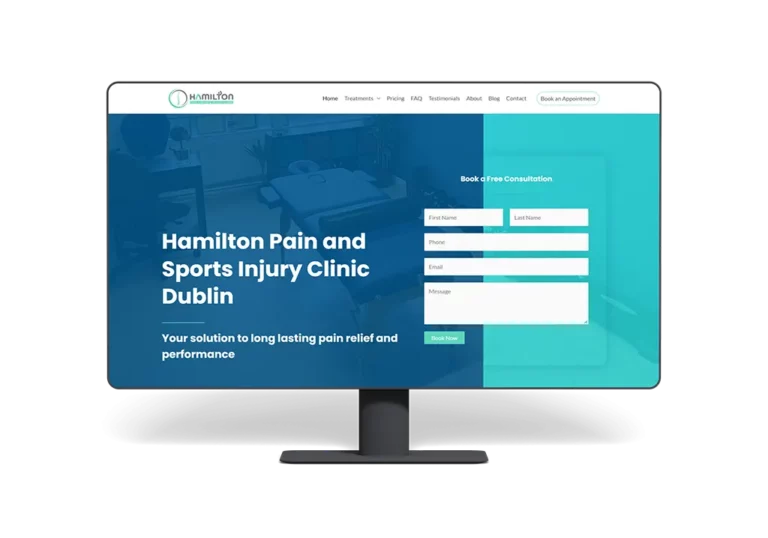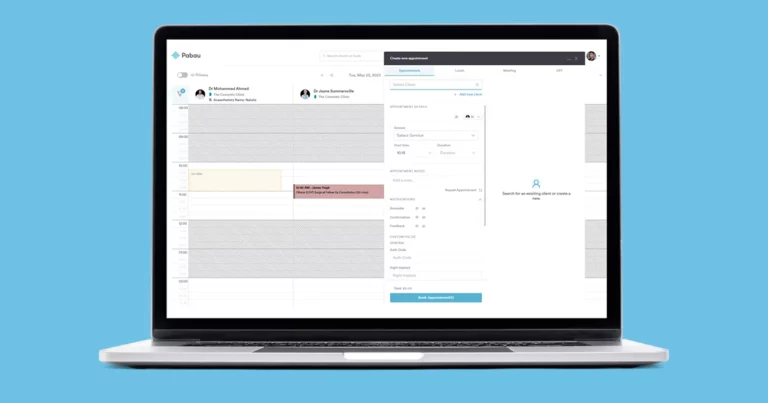We’ll cover everything from the basics of market research to more advanced techniques. By the end of this guide, you’ll be an expert in conducting market research and making sound business decisions based on your findings!
What is market research?
Market research is the process of gathering information about your target market. This can be done through surveys, interviews, focus groups, and other data-gathering methods. The goal of market research is to learn more about your target market so that you can better understand their needs and desires. This information can then be used to create marketing campaigns that are more likely to be successful.
Why do market research?
There are many reasons to do market research. By understanding your target market, you can make informed decisions about how to reach them, what products or services to offer, and what pricing strategy to use. Additionally, market research can help you identify new business opportunities and understand what trends are affecting your industry.
Ultimately, market research is an essential tool for any business that wants to be successful in today’s competitive marketplace. By taking the time to understand your target market and your place in the industry, you can make strategic decisions that will help your business grow and thrive.
Primary vs. Secondary Research
Primary research is conducted by a company or organization itself. This type of research is original and collected firsthand. It’s used to solve a specific problem that the company is facing. For example, a clothing company looking to enter the athletic apparel market may conduct primary research by surveying consumers about their workout habits and what type of athleisure they would purchase.
Secondary research is conducted by someone other than the company or organization intending to use it. This type of research has already been published in some form, such as in a magazine article, academic journal, or online blog. It can be helpful for companies to supplement their own primary research with secondary research to get a more well-rounded view of the market.
Types of Market Research:

1. Interviews
There are many different types of market research, but one of the most common and effective methods is interviews. When you conduct interviews as part of your market research, you’ll be able to gather first-hand information from your target audience about their needs, wants, and opinions.
Interviews can be conducted in person, over the phone, or even online via video chat or email. Whichever method you choose, it’s important to ensure that you ask questions that will give you the information you need to make informed decisions about your business.
When conducting interviews, it’s also important to keep in mind that not everyone will be willing to talk to you. In order to increase your chances of getting useful information, offer participants an incentive for taking the time to speak with you. This could be something like a discount on their next purchase or a free product sample.
2. Focus Groups
When conducting market research, focus groups can be an invaluable tool. By bringing together a group of target consumers and moderating a discussion, you can gain insights into their attitudes, beliefs, and motivations.
To ensure that your focus group is productive, it’s important to have a well-defined goal and to carefully select participants. Once you’ve done that, you’ll need to create a discussion guide and moderate the session in a way that encourages open and honest feedback.
With careful planning and execution, focus groups can provide insights that you can use to improve your product or service and make your business more successful.
3. Product / Service Use Research
Product or service use research is a type of market research that helps businesses understand how their products or services are being used by customers. This type of research can be used to identify areas where customers are having difficulty using the product or service, as well as to understand customer preferences and needs.
4. Observation-Based Research
Observation-based research involves studying people’s behavior in naturalistic settings. This can be done through direct observation or by using indirect methods such as video recordings, photographs, and surveys. This type of research is useful for understanding how people interact with products, services, and environments. It can also provide insights into people’s motivations, preferences, and needs. Observation-based research can be conducted online or offline. When conducting offline research, it is important to consider the context in which observations are made. For example, observing people in a store may yield different results than observing them in their homes. When conducting online research, observation can be done through website analytics tools, social media monitoring, and online surveys. Online surveys are a particularly effective way to collect data about customer behavior.
5. Buyer Persona Research
Your buyer persona is the foundation of your marketing efforts. It’s who you’re targeting with your ads, website content, social media, and other marketing materials. So, it’s important that you take the time to research and develop a detailed buyer persona.
To get started, think about who your ideal customer is. What are their demographics? What are their interests? What are their pain points? Once you have a good understanding of your ideal customer, you can start to develop a more detailed buyer persona.
There are a few key things to include in your buyer persona:
- Demographics: Age, gender, location, income, education, etc.
- Interests: What does your ideal customer like to do in their spare time? What kind of websites do they visit? What kind of magazines do they read?
- Pain points: What problems does your ideal customer have that you can help them solve?
Once you have a good understanding of your ideal customer, you can start to create targeted marketing campaigns that will speak directly to them.
6. Market Segmentation Research
When it comes to market research, segmentation is key. By dividing your target market into smaller, more manageable groups, you can more easily and effectively target your marketing efforts.
There are a number of different ways to segment a market, but some of the most common methods include:
- Geographic Segmentation: This type of segmentation divides the market based on geographic location, such as country, region, city, or even neighborhood.
- Demographic Segmentation: This type of segmentation looks at factors like age, gender, income level, education level, and family size.
- Psychographic Segmentation: This type of segmentation looks at lifestyle factors and personality traits.
- Behavioral Segmentation: This type of segmentation looks at consumer behavior, such as purchase history and brand loyalty.
Once you’ve selected a few potential ways to segment your market, it’s time to do some research. You can start by gathering data from your existing customer base. You can also conduct surveys or interviews with potential customers to get their feedback on your product or service.
Once you have a good understanding of your market segments, you can begin tailoring your marketing efforts to better meet the needs of each group. By taking the time to do market segmentation research, you’ll be able to reach your target audience more effectively and boost your bottom line.
7. Pricing Research
Pricing research is a process of gathering data and information about the prices of products and services in a given market. This type of research can be conducted to understand the price trends in a particular market, to determine the optimum price for a new product or service, or to study the effect of changes in prices on consumer demand.
There are various methods that can be used for pricing research, but the most appropriate method will depend on the specific objectives of the research. When conducting pricing research, it is important to consider both the direct and indirect costs associated with the product or service under study. Direct costs include the cost of raw materials, labor, and other production costs. Indirect costs include marketing, distribution, and other overhead costs. It is also important to consider the price elasticity of demand when conducting pricing research.
This refers to the degree to which consumers are willing to change their level of consumption in response to changes in price. If demand is highly elastic, small changes in price can lead to large changes in the quantity demanded. If demand is inelastic, consumers are not very sensitive to price changes and quantity demanded will only change slightly in response to price changes. Pricing research can be a complex and time-consuming process, but it is essential for businesses that want to stay competitive in today’s marketplace.
8. Competitive Analysis Research
One of the most important aspects of market research is competitive analysis. This involves studying your competition in order to understand their strengths and weaknesses. By understanding your competition, you can develop strategies to improve your own business. There are a few different ways to conduct competitive analysis research. One way is to simply observe your competition. This can be done by visiting their businesses and observing their operations.
Another way to conduct competitive analysis is to interview customers of your competition. This will give you insight into why customers are choosing them over you. Finally, you can also gather data from secondary sources such as industry reports or trade associations. This data can be extremely helpful in understanding the competitive landscape. No matter how you conduct competitive analysis research, it’s important that you do it regularly. This will ensure that you always have the most up-to-date information on your competition.
9. Customer Satisfaction and Loyalty Research
Customer satisfaction and loyalty research is critical for businesses to understand what their customers think of their products and services. This type of research can help businesses identify areas where they need to make improvements and also track whether those improvements are resulting in increased customer satisfaction. Additionally, customer loyalty research can help businesses identify which customers are likely to continue doing business with them and advocate for their products or services.
10. Brand Awareness Research
In order to measure brand awareness, research must be conducted with a representative sample of the target market. This can be done through surveys, interviews, or focus groups. The research should ask about respondents’ familiarity with the brand in question and their perceptions of the brand.
Brand awareness research is important for businesses to track over time in order to gauge the effectiveness of marketing and advertising campaigns. It can also provide insights into how customers view the brand and what attributes they associate with it. This information can be used to make decisions about future marketing efforts and product development.
11. Campaign Research
There are a few key steps to conducting effective campaign research. First, you need to identify your target audience. Once you know who your target audience is, you need to determine what they want and need from your product or service.
Once you have a good understanding of your target audience and what they want, you need to create a campaign that will resonate with them.
Your campaign should be based on your research and should be designed to meet the needs of your target audience. Finally, you need to evaluate your campaign to see if it is achieving its desired effect. Campaign research is an important part of any marketing effort and can help you create a successful campaign.
How to Do Market Research?

Define your buyer persona and identify a persona group to engage.
Before you can start developing your marketing strategy, you need to understand your target audience. The best way to do this is to create buyer personas. A buyer persona is a fictional representation of your ideal customer. It takes into account their demographics, behaviors, motivations, and goals. Creating buyer personas will help you better understand your target audience so you can develop targeted marketing campaigns that are more likely to resonate with them.
To create buyer personas, start by collecting data on your current customers. Look at things like their age, gender, location, job title, and interests. You can also consider their buying behavior, such as what kind of products they’re interested in and what factors influence their purchase decisions.
Once you have this data, you can start developing your buyer personas. Give each persona a name and include demographic information, behaviors, motivations, and goals. Once you have your buyer personas developed, you can start thinking about how to engage them. What kind of content will interest them? What kind of messaging will resonate with them? What channels should you be using to reach them? Answering these questions will help you develop a marketing strategy that is tailored to your target audience and more likely to succeed.
Prepare research questions for your market research participants.
When preparing research questions for your market research participants, it is important to consider what information you hope to gain from the research. The questions should be specific and focused on the topic of interest. Additionally, the questions should be framed in a way that will encourage honest and open responses from participants.
Some example questions that could be used to gather information about consumer attitudes and perceptions towards a new product launch include:
- What are your first impressions of this product?
- Do you think this product meets a need or solves a problem?
- How does this product compare to similar products on the market?
- What do you think of the packaging/design of this product?
- Would you recommend this product to a friend or family member?
- What factors influenced your decision to purchase/not purchase this product?
List your primary competitors.
Your primary competitors are the companies that offer similar products or services to your target market. To find out who your primary competitors are, you can use a variety of research methods, including online search engines, industry directories, and social media.
Once you’ve identified your primary competitors, you can start to gather information about them. This can include their product offerings, pricing, marketing strategies, and more. You can use this information to develop your own competitive advantages and strategies.
Summarize your findings.
As you can see, market research is a critical part of any business plan. It helps you determine whether there is a need or opportunity for your product or service in the marketplace. It also helps you understand your customers better and what motivates them to make a purchase.
When conducting market research, it’s important to be as unbiased as possible in order to get accurate results. Once you’ve collected your data, it’s time to analyze it and draw conclusions. This is where your findings will help you make decisions about your business strategy.
Are there certain demographics that are more likely to buy your product? What do customers think about your pricing? What are their overall needs and wants?
Your market research should be an ongoing process, not a one-time event. As your business grows and changes, so will your customer base. By regularly conducting market research, you can stay ahead of the curve and make sure that your business is meeting the needs of your target market.















